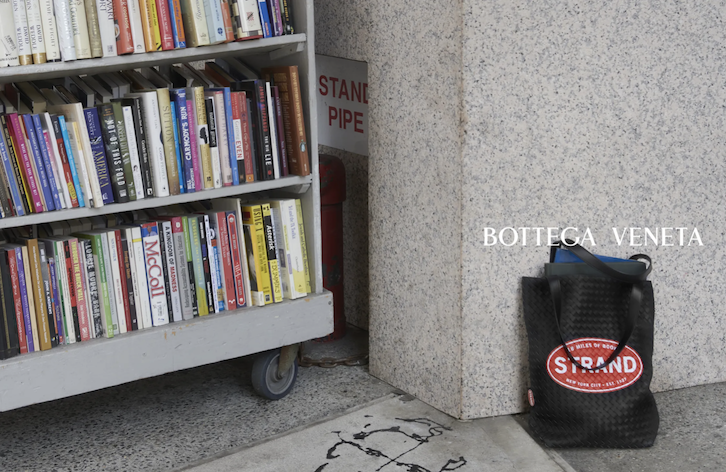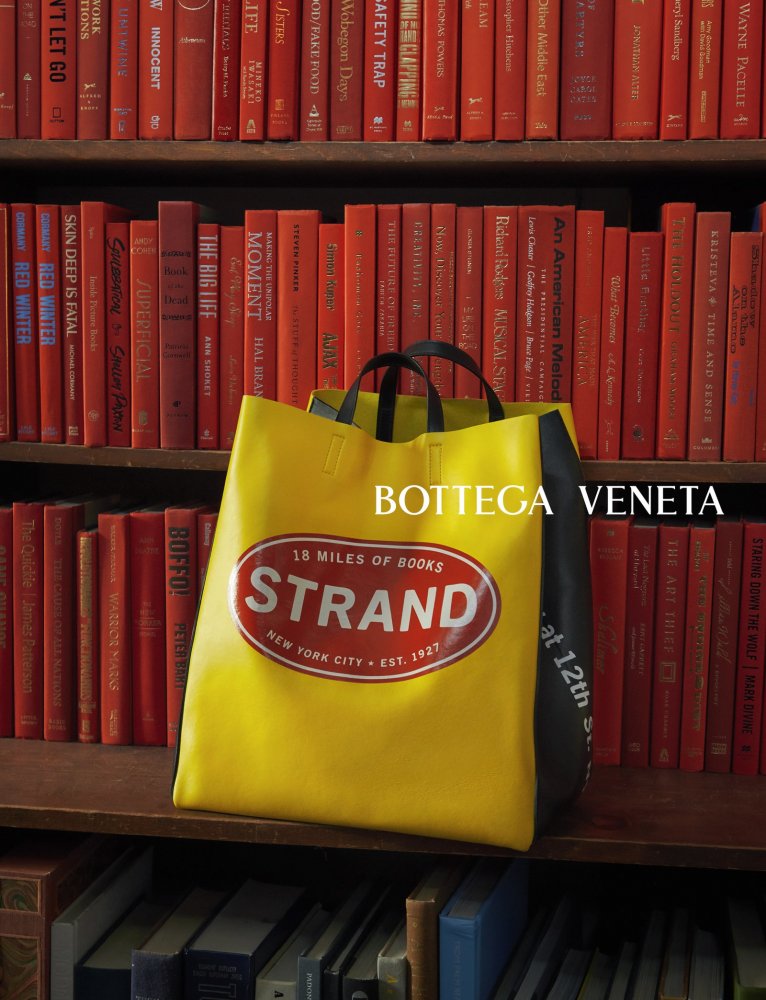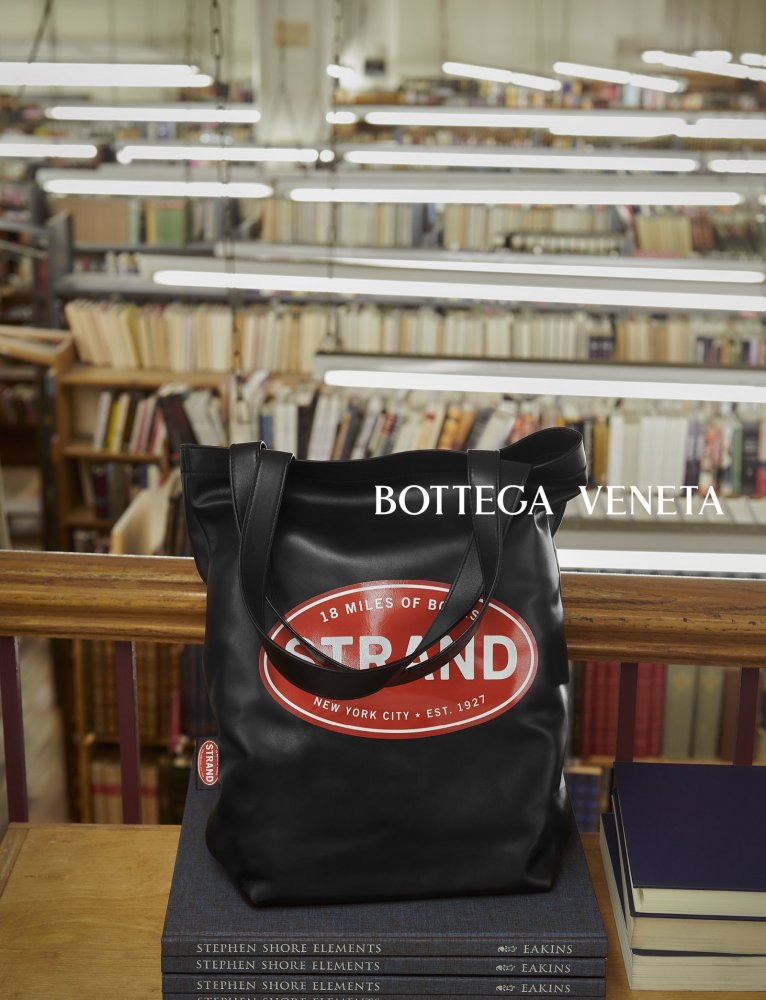The Magician of Milan
Wait … what is that? Is it denim? Is it flannel? No, it’s leather. How Matthieu Blazy changed Bottega Veneta and our material expectations.
BY VANESSA FRIEDMAN / SEPT. 20 2023
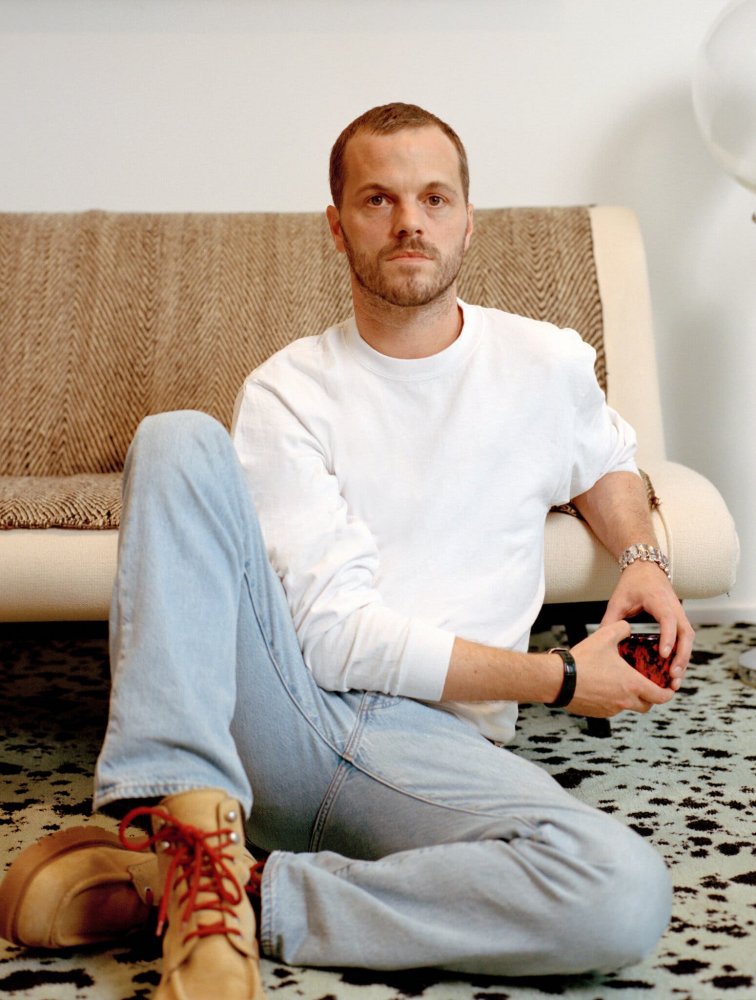 Matthieu Blazy, the creative director of Bottega Veneta, in his office in Milan. The rug was custom-made to resemble stracciatella, his favorite ice cream. Credit...Carmine Romano for The New York Times
Matthieu Blazy, the creative director of Bottega Veneta, in his office in Milan. The rug was custom-made to resemble stracciatella, his favorite ice cream. Credit...Carmine Romano for The New York Times
For years, Matthieu Blazy was a fashion ghost: a specter whispered about but rarely seen. “The most famous designer you’ve never heard of,”
New York magazine crowed in 2014.
At only 30, he was said to be the man behind the renaissance of Margiela couture, after the brand’s founding designer left the house. A few years later, he was rumored to be the secret sauce in Phoebe Philo’s Céline collections. Then he was spotted at Calvin Klein, helping reinvent it under Raf Simons. His name kept coming up in
reference to top designer jobs, but he never took a bow at the end of the runway. He was rarely photographed. He didn’t hang out with celebrities.
“You can’t keep such a talent under wraps,”
Suzy Menkes wrote in British Vogue. Except he did.
Until now.
In late 2021 Mr. Blazy, now 39, became the
creative director of Bottega Veneta, after its previous designer, Daniel Lee, who had
reinvented the brand in only three years, departed under
a cloud of rumors about misbehavior and high employee turnover. Mr. Blazy, who had been Mr. Lee’s No. 2, inherited not just his headline gig, but a house shrouded in innuendo and in need of yet another sprinkling of fairy dust. What did he do?
He changed
leather into denim, flannel, ribbed cotton and knit and fooled everyone. He pulled the rug out from under assumptions in the most gracious way and made the everyday into precious objects that only the wearer really understood. He created a world — one where nothing is quite as it seems — and populated it with an entire assortment of passers-by. He played sleight of hand with the hierarchy of taste.
And he did it so effectively that this month Bergdorf Goodman in New York, which always devotes its fashion week windows to what Linda Fargo, the senior vice president for fashion and store presentation, described as “the best fashion of the season,” filled three of its windows with Bottega — and only Bottega. Two years into the job, Mr. Blazy hasn’t just redefined a brand, he has defined a direction.
Lately there has been a growing rift in the fashion world between designers who make content and designers who make clothes. The content crew considers fashion as a subset of entertainment; the clothes crew sees fashion as a service.
The appointment of
Pharrell Williams as creative director of Louis Vuitton men’s wear was in many ways the apotheosis of the content phenomenon, in which what matters is the spectacle and how it resonates through the world. The garments serve as souvenirs that allow you to buy into the experience and advertise your belonging.
Mr. Blazy has become the epitome of an alternative approach: a designer who puts himself second to the products, the people who make them and the people who buy them. “He doesn’t see himself in the driver’s seat of the company,” said François-Henri Pinault, the chief executive of Kering, the group that owns Bottega Veneta. “He sees himself in the middle of the car.”
Which is not to say he doesn’t know exactly where everyone is going.
House Building
“I said I wanted to go against the stream of the monovision,” Mr. Blazy said, talking about his initial pitch to Mr. Pinault. He was in his office in the Bottega Veneta headquarters in Milan, wearing a white Patagonia T-shirt and faded jeans.
He told Mr. Pinault he thought Bottega should focus on craft, rather than design; that it should be “a house, not a brand.” That may sound like semantics but is the difference between a garment that advertises its point of origin and a garment that slips seamlessly into a wardrobe. And it was very different from the approach of Mr. Lee, who had made Bottega so associated with a single color — a bright, herbalicious green — that you could identify a piece from blocks away. It also explains a lot about how Mr. Blazy approaches not his job, but the world.
When he moved into his office, which was a white box, he had the walls repaneled in wood tinted a rich brown so they looked like a “chalet in Chamonix,” and the room felt more domestic. Now it is anchored at one end by a seating area with an Isa GenzkenNefertiti head on a pedestal and, at the other, by a long table for meetings. The table has a bowl of Ricola lemon mint lozenges, but no computer.
“I did not open a computer for the last six months,” Mr. Blazy said. “I have two, but I don’t use them so much. I sketch a lot and talk a lot and look at books, and I have a phone.” On the floor, below enormous windows, were 16 different piles of paper, each one corresponding to a different collection or project: perfume, new store concepts, the fanzines he creates with people he admires (most recently the British designer Hussein Chalayan, which involved Mr. Chalayan playing with pen and ink, watercolor and glitter to draw pieces from Mr. Blazy’s last show).
On the walls were a series of artworks. Mr. Blazy collects first drafts. It started, he said, because that’s all he could afford, and he liked the idea that they were “the first expression of something.” Then, he said, he couldn’t stop.
“It’s not that I need to have more more more,” he said. “But two or three times a year I try to find something that makes me happy to live with. I would rather have my money on the wall than in the bank.”
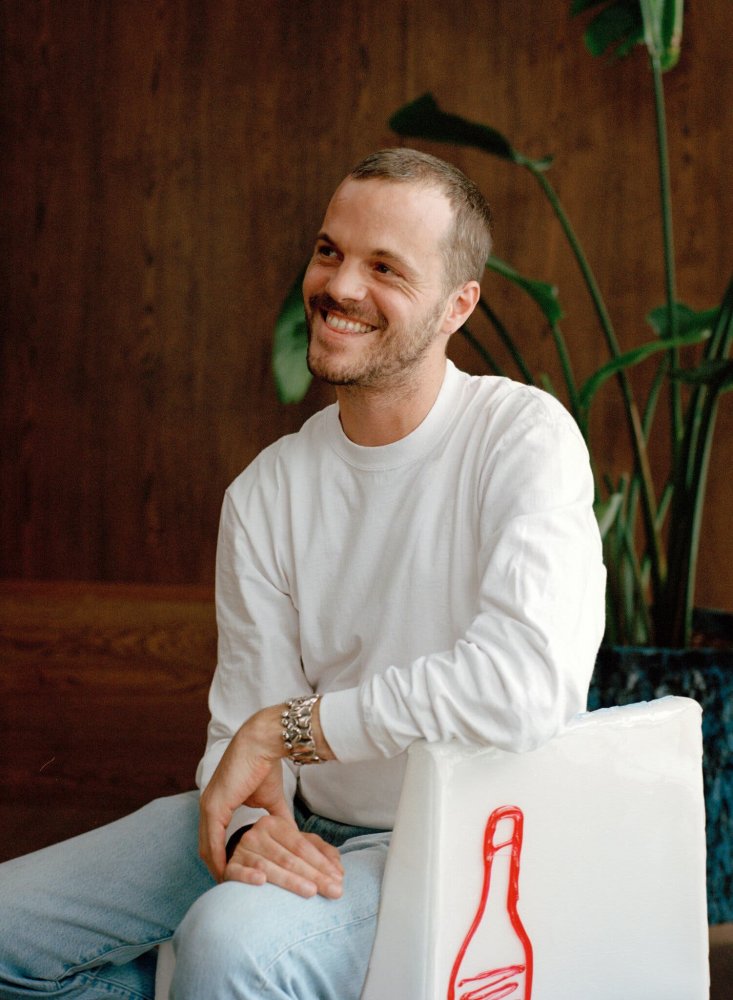 Mr. Blazy sits in a chair by Gaetano Pesce from his spring 2023 show. There was a unique chair for each of the show’s guests, reflecting Mr. Blazy’s belief in the allure of the individual. Credit...Carmine Romano for The New York Times
Mr. Blazy sits in a chair by Gaetano Pesce from his spring 2023 show. There was a unique chair for each of the show’s guests, reflecting Mr. Blazy’s belief in the allure of the individual. Credit...Carmine Romano for The New York Times
When he likes something — Marlboro Lights (he smokes a pack a day); stracciatella (the ice cream with tiny shavings of chocolate that he loves so much he had a special rug designed in its image for his last show; it is now in his office); the Gaetano Pesce chairs he commissioned for the show before that — he whispers, “It’s wonderful,” and his eyes light up like a 10-year-old seeing snow for the very first time.
“He can get inspired by anything,” said Pierre Debusschere, the image and music director for Bottega, who is a close friend. It is not a coincidence that one of Mr. Blazy’s favorite sites in Milan is the Church of Santa Maria presso San Satiro, which features a “false apse” that from the front appears to recede into the distance but up close turns out to be a flat wall painted in trompe l’oeil.
The way Raf Simons, the co-creative director of Prada, who has been Mr. Blazy’s boss twice, and is one of his closest friends, puts it is: “Matt is very free in his head. He has no fear of showing anything he believes in creatively. He always had so many ideas: Add latex kitchen gloves! What about a marching band jacket? Some made completely no sense, and some were so genius I would say, ‘Of course, we are going to do that.’”
Of Course, We Are Going to Do That
“In the past I’ve been proposed a few beautiful houses,” Mr. Blazy said, talking about job offers that came his way before Bottega Veneta. He wouldn’t name names, saying only that “one was very beautiful, about craft, one was very commercial but still about fashion, and one was a smaller house that I thought could be reactivated without being passé. But I never felt it was the right time. I saw a lot of designers taking stuff quickly, and for me it was important to build myself first. I wanted to know my job. Know myself.”
Mr. Blazy grew up in Paris. His father is an expert in pre-Columbian art, and his mother a historian and researcher; he has an older brother who is an airplane pilot and a twin sister who works in Singapore. He was a rambunctious kid — so much so that when he was 13, his parents sent him to a Marist school in the French countryside, and when that didn’t take, to Pangbourne College, a military boarding school in England for a year. (He said he liked it.)
He thought about going into archaeology but ended up at La Cambre, the fashion school in Brussels, because his mother thought it would be good for him to have a skill; Julien Dossena, the creative director of Rabanne, was in his class; Anthony Vaccarello, the creative director of Saint Laurent, was a year above. His graduate collection was about
Claudie Haigneré, the first Frenchwoman in space, who became the minister of science, and involved “big fur coats covered in silver fabric,” Mr. Blazy said. “I had a lot of fun.”
 Mr. Blazy believes that “two voices are better than one.” Four are even better.Credit...Carmine Romano for The New York Times
Mr. Blazy believes that “two voices are better than one.” Four are even better.Credit...Carmine Romano for The New York Times
Mr. Simons liked the collection so much he offered Mr. Blazy a job at his namesake label as a men’s designer. Another designer named Pieter Mulier was already working there, and he and Mr. Blazy soon became a couple.
“We did everything together,” Mr. Simons said. “Go to fabric fairs in Paris, go to the movies, go on vacation.”
Four years later, however, and still in his 20s, Mr. Blazy jumped to the Margiela Artisanal collection, that brand’s equivalent of couture. That’s where he began to experiment with the idea of transformation; using one kind of material (plastic hair combs) to represent another (fringe).
“I could really use my passion digging, being curious,” he said. But, he said, he was worried he would be pigeonholed as a conceptualist, so he ended up hopscotching to Céline, when Phoebe Philo was creative director, to work on the more commercial precollections and, from there, to Calvin Klein, where he teamed up with Mr. Simons and Mr. Mulier once again.
It was, Mr. Blazy said, like a “high school reunion. It was very romantic. We’re going to meet new people, we’re going to live in New York.”
He and Mr. Mulier rented a weekend place in Connecticut and got a rescue puppy called John John.
But then the Trump election happened, and the Calvin collections became less about the American dream than the American nightmare, somewhat to the dismay of PVH, the conglomerate that owned Calvin Klein. Mr. Simons and his inner circle were
fired abruptly after two years.
“It was hell,” Mr. Blazy said. “Like when you have your boxes on the street. It’s something you see in movies, and then you are the main character.”He thought about leaving fashion. Instead he ended up going to Los Angeles to help the artist Sterling Ruby with a collection he showed during the Pitti Uomo trade fair, in Florence.
That’s when Daniel Lee, who had been the design director at Céline when Mr. Blazy was there and had just been tasked with updating Bottega Veneta, came calling. And though Mr. Blazy had reportedly gotten fed up with Mr. Lee’s erratic leadership and resigned following a show in Detroit (he declined to discuss the situation), when Leo Rongone, the chief executive, was looking for Mr. Lee’s replacement, “It was clear we had the right person already here.”
The Anti-Pharrell
Mr. Blazy approached Bottega Veneta with two goals: First, to challenge himself to make something that is wearable. “Because we are expensive, it should be an investment,” he said. And second, to interact with the world we live in. “Timeless is a word I just cannot hear anymore,” he said. “It’s more about a responsibility we have as designer to offer something that lasts.” But also is not boring.
The first thing he did was reduce the size of the design teams so that everyone could sit around the same table. Then he involved the craftspeople (the leather workers and fabric developers) in every conversation.
“He knows everyone’s name,” Mr. Rongone said. “He listens to everyone.” He brought a “new mood” to the studio, Mr. Pinault said. That’s how those leather jeans — “the first thing I asked for on the first day in the first meeting,” he said — came about.
The first response was “not possible,” Mr. Blazy said. Then the teams started going through test after test — about 30 to 40 of them, he said — until one day his staff brought him a sample, “and I thought it was cotton,” he said. “I’ll always remember that day.” Those “denim” jeans, which cost $6,900, sold out in two weeks, Mr. Blazy said.
Mr. Blazy believes in products that serve a function, like the Andiamo bag, a practical intrecciato style that Mr. Rongone said has become Bottega’s best-selling item, and products that are unique, like a “sardine bag” from the last collection that comes with a Murano glass handle shaped like a Brancusi fish. No two handles are exactly alike (though there is a more accessible brass version). Twenty-five such bags were produced, costing $11,000 each, of which Bergdorf got three — “and they sold immediately,” Ms. Fargo said. At this stage, said Mr. Pinault, Bottega is close to becoming the third largest brand in the group, just after Gucci and Saint Laurent, and vying with Balenciaga.
“Even their most commercial pieces are special,” Ms. Fargo said. “We’re all in on it.”
Mr. Blazy recently got his own apartment in Milan, after surfing a series of Airbnbs. (Mr. Mulier, now the creative director of Alaïa, and Mr. Blazy split up earlier this year; they are friends and share custody of the dog, though the breakup is still too hard for him to talk about.) The apartment, at the top of a 1960s Modernist building, looks a bit like a houseboat inspired by Frank Lloyd Wright: dark wood, slanted ceilings, with a step up on one side to a tiny balcony that is covered in greenery.
“I walked in and thought, ‘This looks familiar,’” Mr. Blazy said. It turned out he was renting the same apartment Mr. Simons had rented for a time during a stint as creative director of Jil Sander from 2005 to 2012.
He shares the flat during the week with Mr. Debusschere. They have music planning meetings in the kitchen late at night over drinks, and more corporate meetings in the morning, looking over the roofs of Milan and drinking coffee. Mr. Blazy often brings art from his house to his office, and vice versa. He shot the most recent Bottega ad campaign in the courtyard of the apartment, featuring Mariacarla Boscono and his very stoic looking doorman.
Lately he has been thinking a lot about nature. “I’m interested in fish,” he said to his team. “Can we look at birds? I saw this woman in the street. She was walking with double shorts. I think it’s interesting. Can we try? Maybe it’s too perfect. Can we try to make it less perfect?” And so on.
When they are in the studio, he said, he asks his team, “Would you wear this?” Sometimes they say no. Then, he asks them, “Why did you design it?”
Last season he began styling his shows himself, which he will do again this season. “I would rather make my own mistakes,” he said.
He is glad he took his time in stepping forward. “Because now, even if I doubt, I know a question mark can become not just ‘I don’t know,’” he said. “It can become an adventure.”

